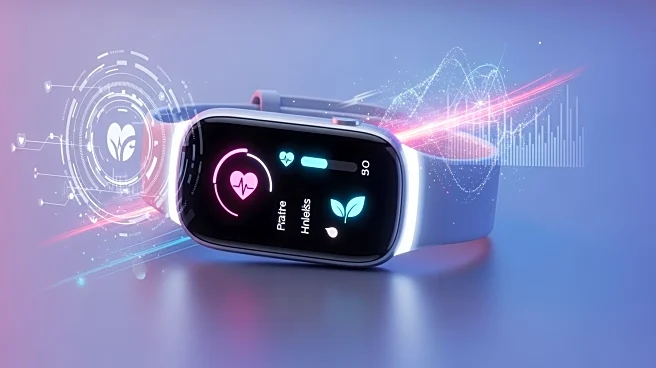What's Happening?
Recent research has highlighted the impact of smart wearable products (SWHP) on health promotion behaviors. The study utilizes the Stimulus-Organism-Response (SOR) model to explain how external stimuli
from wearable devices influence users' internal experiences, leading to positive health behaviors. Key factors such as positive affect, self-efficacy, data management, exercise control, social interaction, and esthetic pleasure are identified as significant influencers of health promotion behaviors. The research suggests that SWHP can enhance users' self-efficacy and positive affect, which in turn promotes healthier lifestyle choices. The study also emphasizes the importance of data management and social interaction in improving users' engagement with health-related applications.
Why It's Important?
The findings underscore the potential of smart wearable products to transform health promotion strategies. By enhancing self-efficacy and positive affect, these devices can encourage users to adopt healthier behaviors, potentially reducing healthcare costs and improving public health outcomes. The integration of social interaction and esthetic pleasure in wearable technology can also increase user engagement, making health promotion more effective. This research highlights the need for developers to focus on user experience and emotional engagement in designing health-related technologies, which could lead to more widespread adoption and better health outcomes.
What's Next?
The study suggests that future developments in smart wearable technology should focus on enhancing user experience through improved data management and social interaction features. Developers are encouraged to explore ways to integrate esthetic pleasure and positive affect into their products to further boost user engagement. Additionally, strategic partnerships with industries such as food and agriculture could provide new opportunities for innovation in health promotion technologies. As the market for wearable health devices continues to grow, these insights could guide future product development and marketing strategies.
Beyond the Headlines
The research points to a broader trend of integrating technology with health promotion, which could have significant implications for public health policy. As wearable devices become more sophisticated, they may play a crucial role in preventive healthcare, potentially shifting the focus from treatment to prevention. This could lead to a reevaluation of healthcare strategies and funding priorities, emphasizing the importance of technology in achieving public health goals.











